20 Best French Movies of All Time
French cinema can boast of great achievements. It was in France that the first demonstration of the cinematograph took place, and Voltaire’s homeland was the world’s undisputed leader in this field until the outbreak of WWI.
Although the whole world raced for supremacy in the invention of “moving pictures,” it was the French who were the first to patent the cinematograph in 1895. The Lumière Brothers, with their famous demonstration in the basement of the Paris Grand Café, officially announced the beginning of cinema. France, until World War I, was also the undisputed leader in film production, as well as the forerunner of the most important cinematic conventions. It was here that a distinction was made between documentary cinema, initiated by the Lumiere brothers, and cinema telling fictional stories. The precursor of the latter trend was the famous French illusionist Georges Méliès, who also initiated many film genres.
The most important French studios were Pathé (focusing on entertainment films, such as Max Linder’s comedies) and the Gaumont label. The latter produced thriller cinema, but also other pictures. Gaumont was also the first film company in the world to employ a female director, Alice Guy. France briefly developed an unsuccessful experiment in art film, the so-called Film D’art.
After World War I, however, the United States began to lead the way in film production. Among the dominant trends of the interwar era one can mention film impressionism, and later also other avant-garde currents, such as Dadaism and Surrealism. The sound breakthrough came in France in 1929, and among the first outstanding sound-animated films can be mentioned the comedies of René Clair. The most important trend of the 1930s turned out to be poetic realism, represented by Marcel Carné or Jean Renoir.
French movies – from the war to the present day
During World War II, French cinema continued to develop, interestingly enough, without the influence of the propaganda of the collaborationist Vichy state. It even released some masterpieces at the time, such as “Les Visiteurs du Soir” (1942) by Marcel Carné and Jacques Prévert. French postwar movies, on the other hand, pursued the tenets of realism, such as the works of René Clément. The 1950s, meanwhile, saw the triumph of existentialism in the style of Jean Delannoy, Yves Allégret, Henri-Georges Clouzot. At the same time, popular cinema was developing, whose biggest star was Gérard Philipe.
In the late 1950s and early 1960s, the French New Wave came to the fore, initiating changes in cinematography around the world. Among the forerunners of this trend were François Truffaut and Jean-Luc Godard, it also included the work of Éric Rohmer, Louis Malle and Jean Eustache. Meanwhile, the biggest stars of the New Wave were Brigitte Bardot, Jeanne Moreau, Jean-Paul Belmondo and Alain Delon. At the same time, of course, genre popular cinema was developing, especially comedies with Louis De Funes.
The 1980s saw the emergence of a neo-Baroque trend in French cinema, represented, for example, by Luc Besson. The next decade, on the other hand, was characterized by a focus on social issues. To this day, French film is still very successful, both in popular genres such as comedy, historical farce and sensation, and in art cinema. This is evidenced, for example, by the paintings of J-P. Jeunet, Alain Chabat, François Ozon or Olivier Nakache and Eric Toledo.
The Best French Movies
1. “The Woman From Nowhere” (“La Femme de nulle part”, 1922)
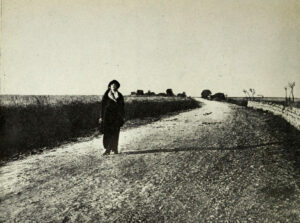
“The Woman from Nowhere” from 1922 is one of the examples of French Impressionism, a cinematic trend whose main representative was Louis Delluc. The work tells the story of a mysterious meeting between a young married woman and an aged stranger. The woman shows up at the girl’s house, claiming that years ago she abandoned the place and her family for mad love. The current owner of the house also carries similar intentions.
2. “Napoleon” (1927)

“Napoleon” (1927), on the other hand, is the flagship work of Abel Gance, a director who began his career as an impressionist filmmaker. The film is a monumental story of the French emperor, Bonaparte. The six-hour work tells the story of Napoleon’s youth and his path to the top. The action takes place until 1797, when the future French emperor was conducting a military campaign in Italy.
3. “Un chien andalou” (1929)
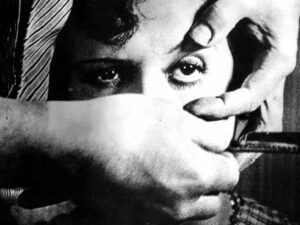
“Un chien andalou”, directed by Luis Buñuel, is the flagship work of cinematic surrealism. The picture was co-created by Salvador Dali. The film depicts an unnamed pair of protagonists: a woman (Simone Mareuil) and a man (Pierre Batchef). The work is a series of dreamlike scenes that are neither plotually nor logically connected. A drastic scene of the cutting of a human eye has gone down in cinema history.
4. “Under the Roofs of Paris” (“Sous les toits de Paris”, 1930)
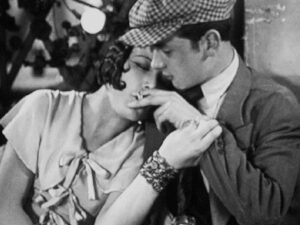
“Under the Roofs of Paris” from 1930 is a great comedy by René Clair. It was one of the first French sound films, which delighted audiences with its excellent integration of musical parts into the plot. The protagonists of Clair’s work are ordinary people: a street singer (Gaston Modot) and a young Romanian woman (Pola Illéry), who experience amorous adventures in the setting of a poor district of Paris.
5. “Grand Illusion” (“Le Grande Illusion”, 1937)

“Grand Illusion” from 1937 is a French masterpiece by Jean Renoir. The film is set during World War I. Two French airplane pilots get into Prussian captivity. Paradoxically, it turns out that social barriers are sometimes stronger than differences between nations. Comrades in Arms is a deeply pacifist work, with Jean Gabin, Pierre Fresnay and Erich vin Stroheim playing the main roles.
6. “Le Jour se leve” (1938)
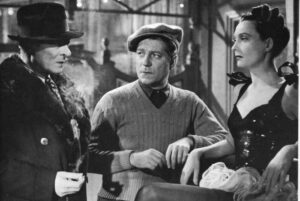
“Le Jour se leve” is a great film by Marcel Carné. The main character of the work is a man (Jean Gabin) who, out of love for a woman, committed a murder. The plot of the film takes place over the course of a single night, when the protagonist, hiding from the police, unravels his fate. The work of Marcel Carné is one of the leading positions of poetic realism.
7. “Children of Paradise” (“Les enfants du paradis”, 1945)
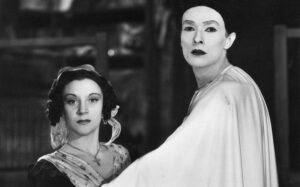
“Children of Paradise” is another outstanding film by Marcel Carné from 1945. The work is set in 19th century France and centers around the amorous adventures of the talented mime Baptiste (Jean-Louis Barrault) and the beautiful courtesan Garance (Arletty). The film starred Pierre Brasseur, Pierre Renoir and Maria Casares, among others.
8. “The Wages of Fear” (“Le salaire de la peur”, 1953)
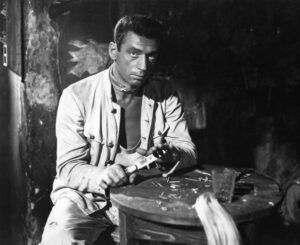
“The Wages of Fear” by Henri-Georges Clouzot is a famous thriller set in the trend of French existentialism. The plot of the film is set in South America. Four Europeans decide to participate in a dangerous expedition to bring nitroglycerin to an American oil company. The film stars Yves Montand, Charles Vanel and Peter van Eyck, among others.
9. “A Man Escaped” (“Un condamné à mort s’est échappé ou Le vent souffle où il veut” 1956)
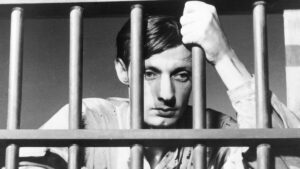
“A Man Escaped” from 1956 is one of Robert Bresson’s most outstanding films. The plot of the work was based on fact – it tells the story of a member of the French Resistance (played by François Leterrier), who during World War II escaped from a German prison just before his execution. The director received an award at the Cannes Film Festival for Escape of a Convict.
10. “Hiroshima mon amour” (1959)
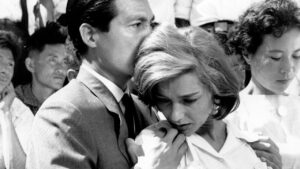
“Hiroshima mon amour” was a huge blockbuster directed by Alain Resnais. Emmanuelle Riva played the leading role in the film, with Eiji Okada at her side. The romance between a French actress and a Japanese architect set in post-war Japan becomes an opportunity to reflect on the tragic events of World War II. The work won a special mention at the Cannes Film Festival.
11. “Breathless” (“À bout de soufflé”, 1960)
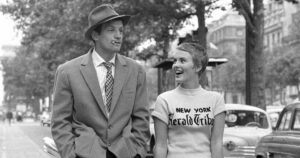
“Breathless”, directed by Jean-Luc Godard, is one of the most important films of the French New Wave. The main character of the work is a gangster (played by Jean-Paul Belmondo) who steals a large sum of money and kills a policeman. In turn, during his escape, he strikes up an affair with a beautiful student Patricia (Jean Seberg).
12. “The 400 Blows” (1959)
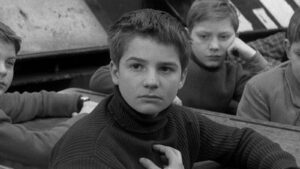
“The 400 Blows” is one of the most important films of the French New Wave. The story of the hardships of adolescence and rebellion against the hypocritical adult world became a capacious metaphor for the negation of bourgeois traditions. François Truffaut here captured the spirit of the youth protest movements of the 1960s. The lead role of the teenage Antoine was played by Jean-Pierre Léaud.
13. “The Gendarme in New York” (“Le Gendarme à New York”, 1965)
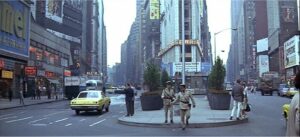
“The Gendarme in New York” (1965) is one of a series of great comedies starring the irreplaceable Louis de Funes. It is a classic of French popular cinema, which broke viewing records for several decades. The adventures of the amiable gendarme from Saint-Tropez still entertain audiences to tears today.
14. “The Collector” (“La Collectionneuse”, 1967)
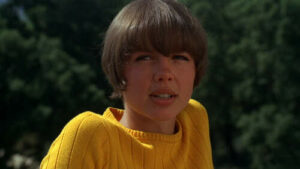
“The Collector” (1967) is one of the best films in the oeuvre of Éric Rohmer, author of well-known drawing room comedies. The film is one of the links in the Moral Tales series. The collector of the title is a young girl, Haydee (Haydée Politoff), who toys with the feelings of successive men interested in her. The film stars Patrick Bauchau and Dennis Berry, among others.
15. “The Mother and the Whore” (“La maman et la putain”, 1973)
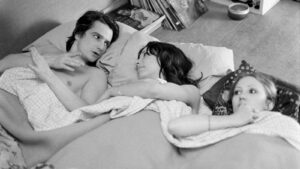
“The Mother and the Whore” (1973), directed by Jean Eustache, is one of the most important French movies. The loosely constructed plot oscillates around the relationship of a love triangle: the intellectual Alexander (Jean-Pierre Léaud), Marie (Bernadette Lafont) and Veronica (Francoise Lebrun). “The Mother and the Whore” is both a portrait of a generation and a film with autobiographical qualities.
16. “The Name of the Rose” (“Der Name der Rose”, 1986)
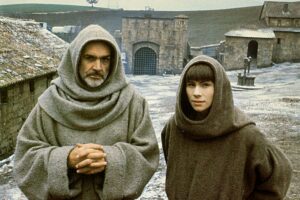
“The Name of the Rose” (1986) is a spectacular film by Jean Jacques Annaud based on the well-known novel by Umberto Eco. The work is set in a medieval monastery, where a series of mysterious murders occur. The leading roles are played by Sean Connery, F. Murray Abraham and Christian Slater.
17. “The Big Blue” (“Le grand bleu”, 1988)
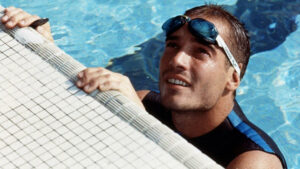
“The Big Blue” (1988) by Luc Besson is a beautiful story about the competition between two divers: Jacques and Enzo, who race to reach the greatest possible depth without oxygen protection. The film’s two versions, American and European, have two different endings. Besson’s masterpiece impresses with magnificent cinematography of underwater worlds. The film stars Jean Reno, Paul Shenar and Rosanna Arquette, among others.
18. “Hate” (“La haine”,1995)
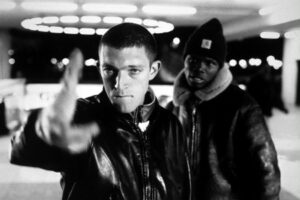
“Hate” is Mathieu Kassovitz’s acclaimed 1995 film. The director tells the story of young, rebellious residents of poor neighborhoods in Paris. The film draws a complex portrait of the immigrant community. Starring Vincent Cassel, Hubert Kounde and Saïd Taghmaoui.
19. “Amélie” (“Le fabuleux destin d’Amélie Poulain”, 2001)
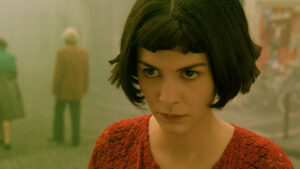
“Amélie” (2001) is a very popular French comedy whose heroine is a young Parisian woman. When one day she finds a box of children’s treasures of a previous tenant in her house, she decides to find its owner and give him back his property. In the process, the girl begins to change the lives of many people. The role of the titular Amelia is played by Audrey Tautou.
20. “Five Times Two” (“5×2”, 2004)

“5X2” is one of the famous works of François Ozon, director of Pool and Eight Women. The film tells the story of a young marriage in achronological order. Indeed, the story begins with a divorce and ends with a romantic reunion of the partners. The film stars Valeria Bruni Tedeschi and Stéphane Freiss in lead roles.
